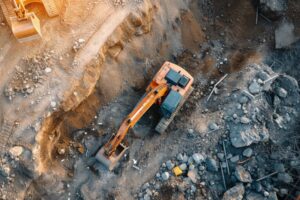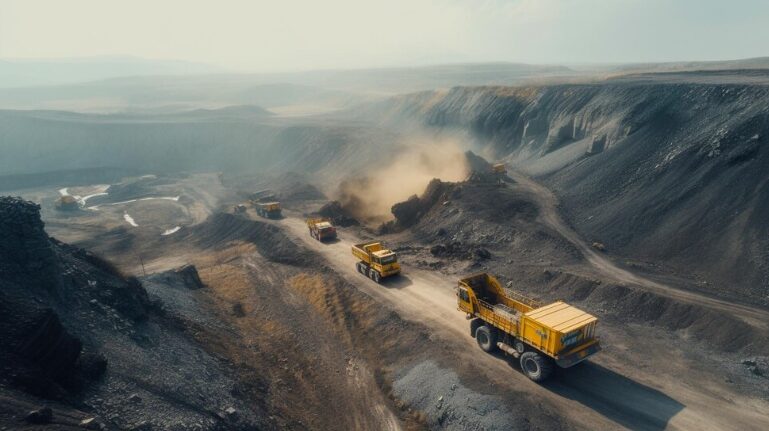In industries such as mining, where heavy machinery and complex equipment are integral to operations, safety is of paramount importance. MSHA plays a critical role in ensuring that these environments remain as safe as possible for workers. MSHA inspectors enforce safety regulations, identify hazards, and ensure that equipment meets the stringent standards to prevent accidents and fatalities. This article delves into the vital role MSHA inspectors play in equipment safety, highlighting their responsibilities, the challenges they face, and the impact they have on reducing risks and improving overall safety in mining operations.
What Are The Primary Responsibilities of MSHA Inspectors Regarding Equipment Safety?
MSHA (Mine Safety and Health Administration) inspectors have a critical role in maintaining the safety standards of mining operations. Their primary responsibilities include assessing the compliance of mining equipment with current safety regulations, idntifying potential hazards, and providing guidance to mitigate risks. MSHA inspectors work to ensure that all equipment used in mines meets federal safety requirements, thereby protecting workers and promoting a culture of safety.
How Do MSHA Inspectors Assess the Safety of Mining Equipment?
To evaluate equipment safety, MSHA inspectors conduct thorough examinations that include visual checks and performance tests. These assessments verify that machinery is functioning properly and is equipped with necessary safety features. Inspectors check for any wear and tear that could compromise safety, confirm the use of approved protective measures, and ensure that maintenance records are up to date.
What Are Some Common Safety Violations That MSHA Inspectors Find During Equipment Inspections?
Some of the most frequently noted safety violations include improperly maintained equipment, the absence of critical safety guards, inadequate emergency stop mechanisms, and failure to use equipment as per manufacturer guidelines. Inspectors often encounter issues such as outdated safety protocols or operators lacking proper training on machinery use, which can lead to serious safety risks.
How Often Are Equipment Inspections Conducted by MSHA, and What Triggers an Inspection?
MSHA conducts regular inspections at mines several times a year, based on the operation’s type and classification. Triggers for additional inspections may include reported incidents, complaints from workers, or observed non-compliance during previous visits. These inspections ensure that mining operations stay vigilant about safety and remain compliant with regulations.
What Impact Do MSHA Inspections Have on the Overall Safety Culture in Mining Operations?
Regular MSHA inspections foster a strong safety culture within the mining industry by emphasizing accountability and adherence to established safety practices. They create an environment where safety is prioritized, not just in response to regulatory requirements but as an ingrained part of daily operations. The presence of inspectors and the consistent application of safety standards encourage proactive safety measures and increased awareness among workers and management alike.
What Is the Inspection Process Like?
The MSHA inspection process generally involves several key steps: an initial meeting with mine operators, an on-site walk-through to evaluate equipment and procedures, discussions with workers, and a review of documentation such as safety logs and maintenance records. Agents find and document detailed notes, uncover violations, and issue citations when necessary. Follow-up inspections may be scheduled to ensure corrective actions have been implemented.
What Specific Equipment Types Are Most Frequently Inspected by MSHA?
MSHA pays particular attention to equipment that poses the highest risk to workers. This includes conveyor belts, drilling machines, heavy loaders, and underground support machinery. Equipment used for ventilation and dust control is also closely inspected, as malfunctioning devices can significantly impact workers’ health and safety.
How Does MSHA Collaborate with Mining Companies to Improve Equipment Safety Standards?
MSHA engages with mining companies by providing training programs, safety workshops, and guidance on best practices for equipment maintenance and safety. The agency works closely with mine operators to create tailored solutions for specific challenges, ensuring that safety improvements are both practical and effective.
What Training Do MSHA Inspectors Receive to Effectively Evaluate Equipment Safety?
MSHA inspectors undergo comprehensive training that covers technical aspects of mining equipment, risk assessment, and compliance standards. They receive education on new safety technologies and industry trends to keep their skills current. This training ensures inspectors have the knowledge and expertise necessary to evaluate complex mining machinery and promote safety effectively.

How Does Technology Play a Role in the Inspections Carried Out by MSHA?
Advanced technology has become an integral part of MSHA inspections. Inspectors now use digital tools, sensors, and automated monitoring systems to enhance their assessments. These technologies provide real-time data on equipment performance, detect hidden hazards, and facilitate faster and more accurate safety evaluations.
Securing Safe Operations: The Vital Impact of MSHA Inspectors on Equipment Safety
The role of MSHA inspectors in ensuring equipment safety is indispensable. Their thorough inspections and guidance significantly reduce accident rates, improve operational standards, and foster a safer working environment. By enforcing regulations, educating workers, and leveraging technology, MSHA contributes to the continuous improvement of safety practices in the industry.

